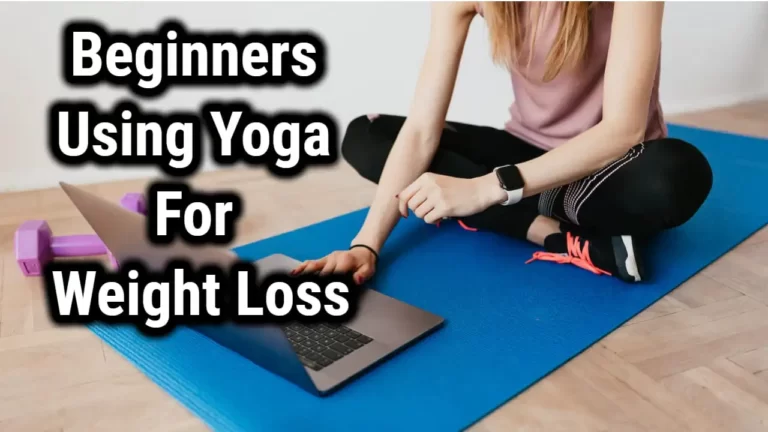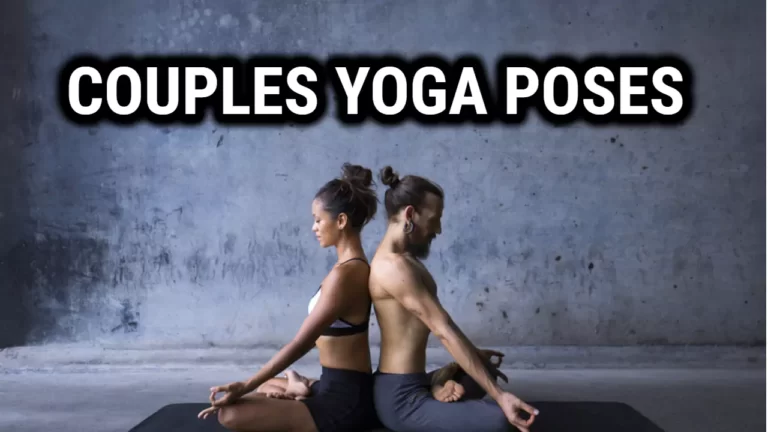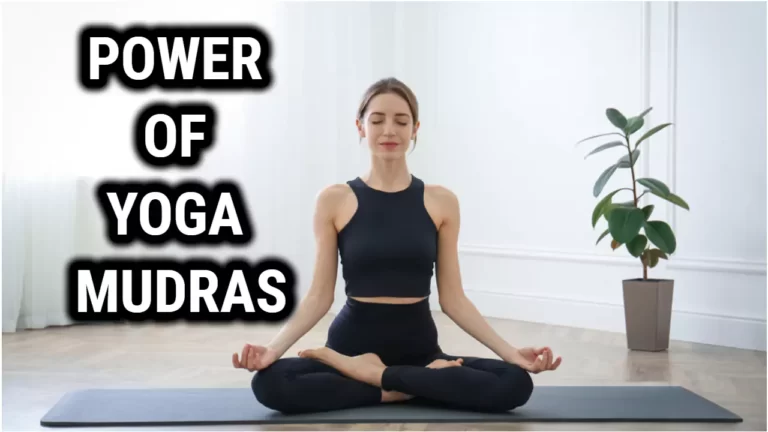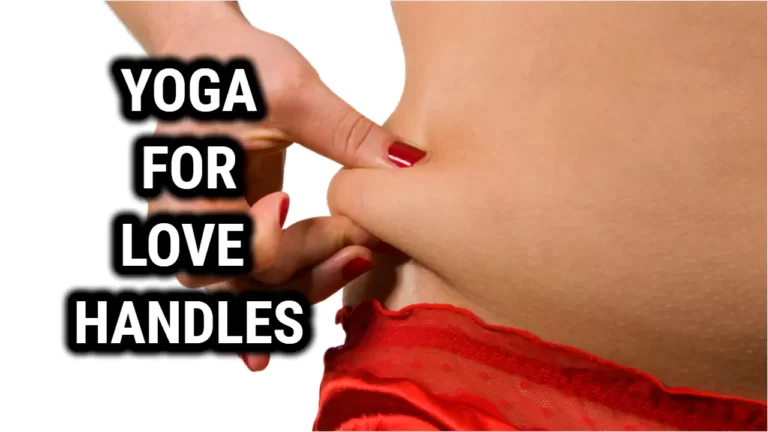The Best Yoga Poses For Guys: Improve Your Flexibility and Strength with These Top Picks

Are you a guy looking for a new way to stay fit? Yoga is an excellent option for men of all ages and sizes. Whether you’re a beginner just starting out or an experienced yogi, this article will provide the best yoga poses for guys! We’ll discuss which poses are beneficial to your overall health and well-being, as well as how to do them correctly. So, if you’re ready to get your yoga on, let’s dive in!
Yoga not only helps you to stay physically fit but it also has mental benefits too. It helps reduce stress levels and improves focus, making it an ideal exercise for busy professionals. Plus, it’s low-impact so it won’t put too much strain on your joints. As a result, you can reap the rewards of yoga without putting yourself at risk of injury.
The best yoga poses for guys vary depending on their individual needs and goals. Whether you want to improve flexibility or build strength and endurance, there are several poses that can help you achieve those objectives. So keep reading to find out which ones are right for you.
Benefits Of Yoga For Men
Powerful postures, profound potential: yoga is a beneficial boon for men. As many males discover the rewards of this ancient practice, they’re realizing that yoga can help them optimize their overall wellbeing.
From greater strength to improved sleep, there are numerous benefits that men can achieve through practicing this multifaceted activity.
First and foremost, yoga adds an impressive boost to physical fitness. By increasing flexibility and range of motion, guys can strengthen and tone muscles from head to toe.
Furthermore, by challenging balance and coordination, men can improve body control and agility. This helps in any sport or other physical activity – leading to enhanced performance on the field or court.
Yoga also helps cultivate mental clarity and emotional equilibrium – two traits that are essential for overall health and happiness.
Through breathwork and meditation, guys can learn to manage stress levels more effectively – allowing them to stay calm in any situation.
Moreover, with regular practice of mindful movement, men can develop a better understanding of themselves as well as others – setting the stage for increased self-confidence and interpersonal skills.
Yoga offers a plethora of practical perks for males who choose to make it part of their lifestyle routine.
Top Yoga Poses for Men
Yoga is a great way to improve flexibility, strength, and balance. It’s not just for women, either. Men can benefit from the practice just as much as women can. In fact, some yoga poses are especially beneficial for men. Here are 10 of the best yoga poses for guys:
1. Downward Facing Dog
Downward Facing Dog is a classic yoga pose that is great for men of all levels. It is a pose that stretches the entire body, from the shoulders to the calves. It is also a great pose for building strength in the arms, shoulders, and core.
To get into the pose, start on your hands and knees with your wrists directly under your shoulders and your knees directly under your hips. Spread your fingers wide and press your palms into the ground. Exhale and lift your knees away from the floor, keeping them slightly bent. As you continue to exhale, lift your hips up and back, straightening your arms and legs.
It is important to keep your head relaxed and let it hang freely. You can also pedal your feet to stretch out your calves and hamstrings. Hold the pose for several breaths, then release back down to your hands and knees.
Downward Facing Dog is a great pose for men who sit for long periods of time or have tight hamstrings. It can help improve posture and relieve tension in the back and neck. It is also a great pose for building strength and stability in the upper body.
2. Warrior II
Warrior II, also known as Virabhadrasana II, is a powerful standing pose that strengthens the legs, hips, and core while also stretching the shoulders and chest. It is a great pose for building stamina and improving focus.
To practice Warrior II, begin in Tadasana (Mountain Pose). Step your left foot back about 3-4 feet, keeping your hips facing forward. Turn your left foot out to a 90-degree angle and bend your right knee so that it is directly above your ankle. Raise your arms to shoulder height, with your palms facing down.
Press into the outer edge of your left foot and engage your left leg, drawing your left thigh up towards the hip. Sink your hips down towards the floor and reach through your fingertips, lengthening your spine. Gaze over your right hand and breathe deeply for 5-10 breaths before switching sides.
Warrior II is a pose that can be modified to suit different levels of flexibility and strength. For beginners, it may be helpful to use a block under the front hand or to keep the back foot at a 45-degree angle. For more advanced practitioners, the pose can be deepened by sinking the hips lower or by adding a bind or a side angle variation.
3. Triangle Pose
Triangle Pose, also known as Utthita Trikonasana, is a great yoga pose for men to stretch their hamstrings, hips, and groin while improving their balance and stability. It is a standing pose that requires a strong foundation with grounded feet and legs.
To perform Triangle Pose, start with your feet about 3-4 feet apart. Turn your right foot out 90 degrees and your left foot in about 45 degrees. Align your heels and keep your legs straight.
Inhale and stretch your arms out to the sides at shoulder height, palms facing down. Exhale and reach your right arm forward, tilting your torso to the right. Place your right hand on your shin, ankle, or the floor outside your right foot.
Stretch your left arm up, palm facing forward, and gaze up at your left hand. Hold the pose for 30-60 seconds, then come up on an inhale, pressing into your feet and lifting your torso back to center. Repeat on the other side.
There are several variations of Triangle Pose that can make it more accessible or challenging, depending on your level of flexibility and strength. For example, you can use a block under your bottom hand to bring the floor closer to you or a wall to support your back leg. You can also bend your front knee slightly or take a bind with your top arm behind your back.
Benefits of Triangle Pose include:
- Stretches hamstrings, hips, groin, calves, shoulders, and spine
- Strengthens legs, core, and back
- Improves balance, stability, and posture
- Relieves stress, anxiety, and fatigue
4. Plank Pose
Plank Pose is a great yoga pose for building core strength and stability. It targets the abs, back, and shoulder muscles, making it an excellent exercise for improving posture and reducing the risk of injury.
To perform Plank Pose, start in a push-up position with your arms straight and your hands shoulder-width apart. Your body should form a straight line from your head to your heels. Keep your core engaged and your glutes tight. Hold the pose for 30 seconds to one minute, or as long as you can maintain good form.
If you find it difficult to hold the pose for that long, you can modify it by lowering your knees to the ground. This will reduce the amount of weight you have to support, making it easier to hold the pose for longer periods of time.
Another modification is to perform Plank Pose on a chair. This is a great option for beginners or those with wrist or shoulder pain. Simply place your hands on the seat of the chair and hold the pose for as long as you can maintain good form.
5. Cobra Pose
Cobra Pose, also known as Bhujangasana, is a great yoga pose for men to help increase mobility of the spine, strengthen spinal support muscles, and relieve back pain. This pose opens the chest and the front of the body, which can be particularly helpful for those who sit for long periods of time. Sitting for extended periods of time can lead to tight chest muscles and stretched, weakened back muscles.
Not only does Cobra Pose help with posture, but it also helps to stretch and strengthen the muscles in the shoulders, arms, and abdomen. Additionally, it can help to improve digestion and reduce stress and fatigue.
To perform Cobra Pose, start by lying on your stomach with your hands under your shoulders and your elbows close to your sides. As you inhale, slowly lift your chest off the ground, keeping your elbows close to your body and your shoulders relaxed. Hold the pose for a few breaths, then exhale as you lower your chest back down to the ground.
It’s important to remember to keep your hips and legs relaxed throughout the pose and to avoid straining your neck by keeping your gaze forward or slightly up towards the ceiling.
For those who may have difficulty performing Cobra Pose, modifications such as placing a pillow or rolled-up blanket under the hips or lowering the chest only halfway can be helpful. As with all yoga poses, it’s important to listen to your body and only go as far as feels comfortable for you.
6. Seated Forward Bend
Seated Forward Bend, also known as Paschimottanasana, is a classic pose from Hatha yoga. This pose is an excellent way to stretch the entire back of the body, from the calves to the hamstrings and spine. It’s a great pose for runners who tend to have tight hamstrings.
To perform Seated Forward Bend, sit on the floor with your legs extended in front of you. Flex your feet and engage your thigh muscles. Inhale and reach your arms up overhead, then exhale and fold forward from your hips, keeping your spine long.
Reach for your feet, ankles, or shins, depending on your flexibility. If you can’t reach your feet, use a strap or towel to loop around the soles of your feet and hold onto the ends with your hands.
Hold the pose for 1-3 minutes, breathing deeply and relaxing into the stretch with each exhale. If you feel any discomfort in your lower back, try bending your knees slightly or placing a folded blanket or cushion under your hips for support.
Seated Forward Bend is an excellent pose for stretching the entire back of the body, improving flexibility, and calming the mind. It’s also a great pose to practice after sitting for long periods of time, as it helps to counteract the effects of sitting and improve posture.
7. Bridge Pose
Bridge Pose, also known as Setu Bandhasana, is a great yoga pose for strengthening the core and lower body. It targets the glutes, hamstrings, and lower back muscles, while also opening up the chest and shoulders.
To perform Bridge Pose, start by lying on your back with your knees bent and feet flat on the floor. Place your arms by your sides with your palms facing down. Inhale and lift your hips up towards the ceiling, pressing your feet and arms into the ground.
Keep your thighs parallel to each other and engage your glutes to lift your hips even higher. Hold the pose for a few breaths before slowly lowering back down to the ground.
Bridge Pose is a great way to counteract the effects of prolonged sitting and slouching, which can lead to poor posture and lower back pain. It also helps to improve spinal flexibility and strengthen the muscles of the back and legs.
For an added challenge, try lifting one leg off the ground while holding the pose, or interlace your fingers underneath your back and lift your chest up even higher.
Also Read: Upper Back Yoga Poses: Imporve Your Posture and Strengthen Your Upper Body
8. Tree Pose
Tree Pose, also known as Vrksasana, is a balancing pose that strengthens the legs and core while opening the hips and stretching the inner thigh and groin muscles. It is a great pose for improving balance, concentration, and focus.
To get into the pose, start in Mountain Pose with your feet hip-width apart and your arms at your sides. Shift your weight onto your left foot and lift your right foot off the ground. Place the sole of your right foot against your left inner thigh, pressing your foot into your thigh and your thigh into your foot.
Bring your hands together in front of your heart in prayer position or raise them overhead. Hold the pose for 5-10 breaths before switching sides.
Tree Pose is a great pose for men because it helps to build better balance, which can improve performance in other physical activities. It also strengthens the muscles in the ankles, calves, and thighs, which can help to prevent injuries. Additionally, Tree Pose can help to improve posture and relieve stress and anxiety.
For an easier variation of Tree Pose, you can place the sole of your right foot against your left calf instead of your thigh. You can also use a wall or chair for support if needed. For a more challenging variation, you can close your eyes or try lifting your arms and leg higher.
9. Child’s Pose
Child’s Pose is a gentle resting pose that can help stretch the hips, thighs, and ankles, while also reducing stress and fatigue. This pose is perfect for beginners, especially those who are new to yoga or have limited flexibility.
To perform Child’s Pose:
- Start on your hands and knees, with your wrists directly under your shoulders and your knees directly under your hips.
- Spread your knees apart, keeping your big toes touching.
- Sit back on your heels and stretch your arms forward, resting your forehead on the mat.
- Breathe deeply and hold the pose for 5-10 breaths.
Modification: If you have knee pain or discomfort, you can place a rolled-up towel or blanket under your knees for support.
Benefits of Child’s Pose:
- Stretches the hips, thighs, and ankles.
- Reduces stress and fatigue.
- Calms the mind and promotes relaxation.
- Can help alleviate back and neck pain.
10. Corpse Pose
Corpse Pose, also known as Savasana, is a resting pose that is often described as the most challenging and important pose in yoga. It is typically performed at the end of a yoga class to allow the body to fully relax and integrate the benefits of the practice.
To perform Corpse Pose, lie down on your back with your arms and legs extended. Let your feet fall out to the sides and your palms face up. Close your eyes and take deep, slow breaths. Focus on relaxing each part of your body, starting from your toes and working your way up to the crown of your head.
Corpse Pose is a great way to reduce stress and anxiety, improve sleep quality, and promote overall relaxation. It can also help to lower blood pressure and reduce muscle tension.
While Corpse Pose may seem simple, it can be challenging to fully let go and allow the body to relax. To get the most out of this pose, it is important to focus on your breath and let go of any thoughts or distractions that may arise.
Related Read: Benefits of Downward Facing Dog Pose in Yoga
Conclusion
Yoga is a great way for guys to improve their physical and mental health. By incorporating these 10 yoga poses into their routine, men can increase their flexibility, strength, and balance while also reducing stress and improving their overall well-being.
It’s important to note that yoga is not a competition and everyone’s body is different. It’s okay to modify poses or take breaks as needed. Consistency is key, so finding a regular yoga practice that works for you is essential.
Additionally, it’s recommended to take a class or work with a certified yoga instructor to ensure proper form and avoid injury. With dedication and practice, men can reap the benefits of yoga and improve their physical and mental health.





